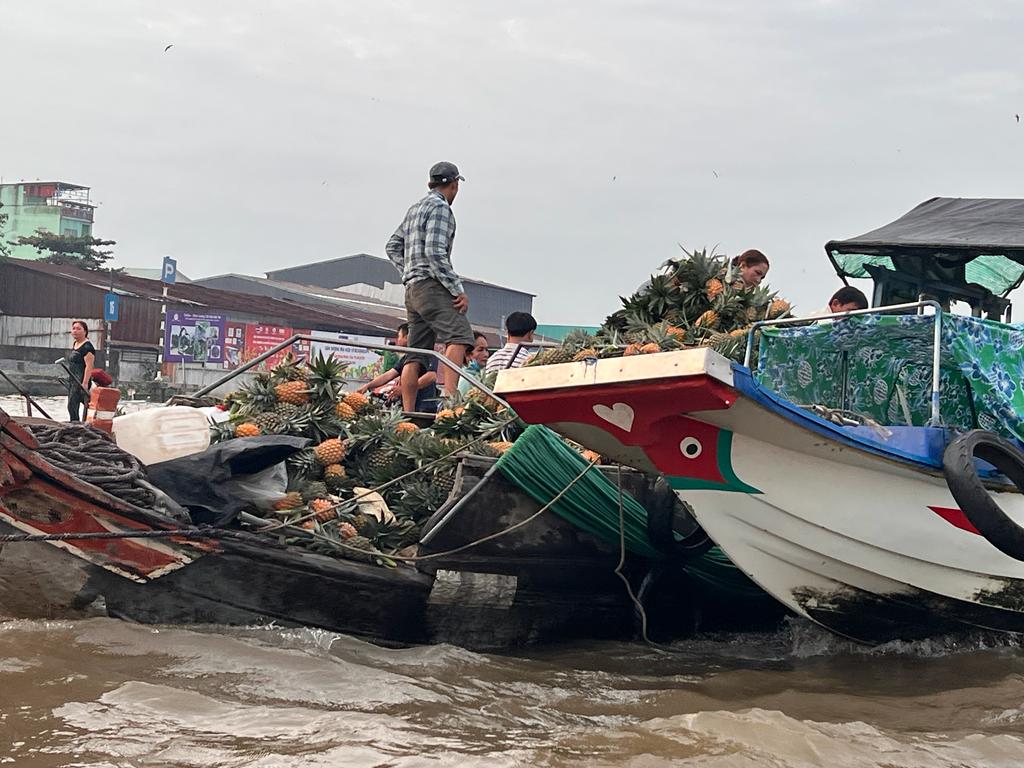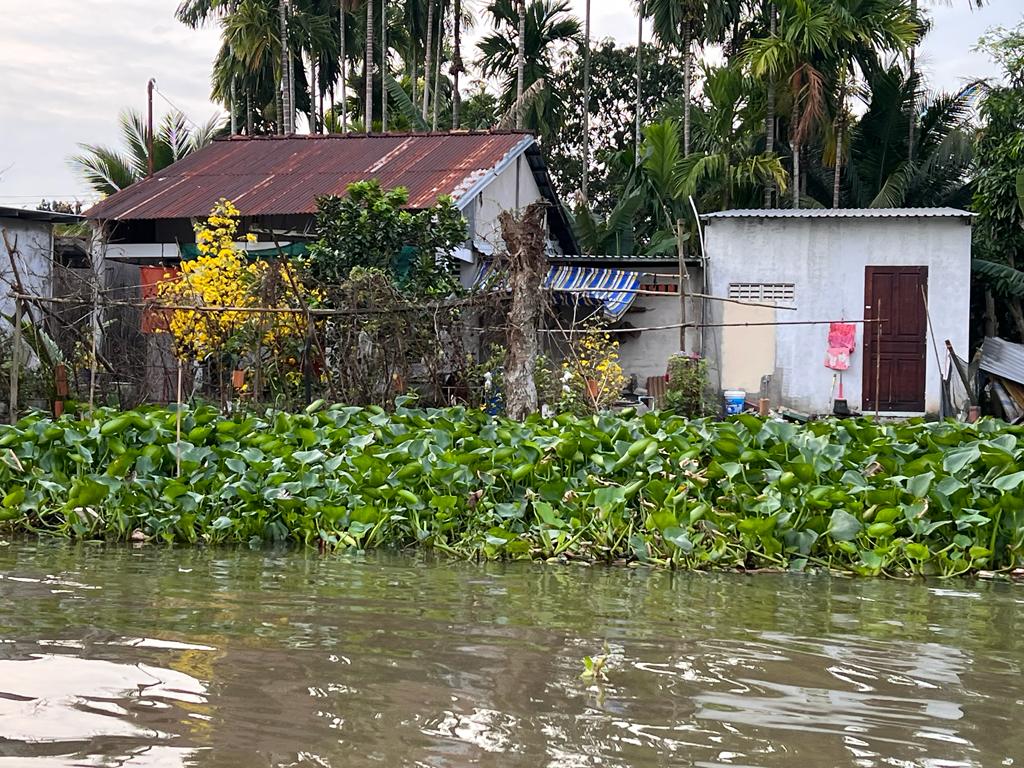By our director, Raffaele Crocco – from Vietnam
 It looks like a large sea, at 5 a.m. A brown, unhealthy sea. Dangerous. “Oh no, don’t worry ” says Steve, our guide “this river must be of this brown colour. No blue water here: if the water is clear, people get worried, they protest. It would not be good” Steve reassures us as he takes us by boat to the floating market in Cai Bei. We are in Can Tho, at the mouth of the river, in Vietnam.
It looks like a large sea, at 5 a.m. A brown, unhealthy sea. Dangerous. “Oh no, don’t worry ” says Steve, our guide “this river must be of this brown colour. No blue water here: if the water is clear, people get worried, they protest. It would not be good” Steve reassures us as he takes us by boat to the floating market in Cai Bei. We are in Can Tho, at the mouth of the river, in Vietnam.
It is one of the many floating markets in this area, famous in the 1970s as a theatre of war between the Vietnamese and the North Americans. Now the war is a memory. The market is the past and the present. It is a food market. Local farmers come down in their small boats and bring what they grow. The big boats, with big eyes drawn on the prow to see the spirits of the river, act as wholesalers and warehouses. Each big boat sells only one product: pineapples or gourds or something else. The small traders come, buy and take ashore. They do so every morning, every sunrise where the river meets the sea.
The Mekong has its source almost 4,900 kilometres further up, in Tibet, at an altitude of 5,700 metres. It flows slowly down here, carrying an unimaginable amount of fish (experts say 850 different species live there) and above all the silt, which makes this land so fertile. The river’s brown colour is due to that, and when the water became strangely clear two years ago, the people of the Mekong, especially in Thailand and Laos, became concerned. They knew that that clarity only concealed dangers.

“Even here the inhabitants were angry. They blame the dams,” says Steve. The Chinese are building dams all along the river, gutting mountains and changing the water’s course. There will eventually be more than 130 of them: Beijing wants them eagerly, investing large sums on them, trading and imposing its own rules in these areas. China considers the Mekong its own river, and considers it indispensable for producing electricity in an area of Asia that is becoming increasingly industrialised. The dams are, however, compromising the natural cycle of the great watercourse, with serious consequences for the population. Fishing in some areas has become more difficult: it is the fault of an alga that threatens to suffocate everything. Silt has also decreased, and the crops are suffering the effects.
In addition to the dams, there is the problem of climate change. The average rainfall is decreasing rapidly. The river is the 12th largest on the planet in terms of water flow. It is a giant, but in recent years some areas are already seeing it reduced to being almost a trickle. A situation that endangers the survival of the almost 60 million human beings who live along the river. The real risk is that of a future, rapid migration, with unimaginable consequences.
Of the impending danger, the river dwellers are aware. They continue to grow fruit along the banks, to fish and live as they have always done. They know, however, that the life of the great river is changing. Governments are also worried and to understand what is happening and what the risks might be, they have also put counter-terrorism experts to work. The result of their analysis is discouraging: the consequences of climate change and dams will be equal to those of a war. The Mekong, with all its history, is in real danger of dying.
Cover image and article photo: own work, R. Crocco
























